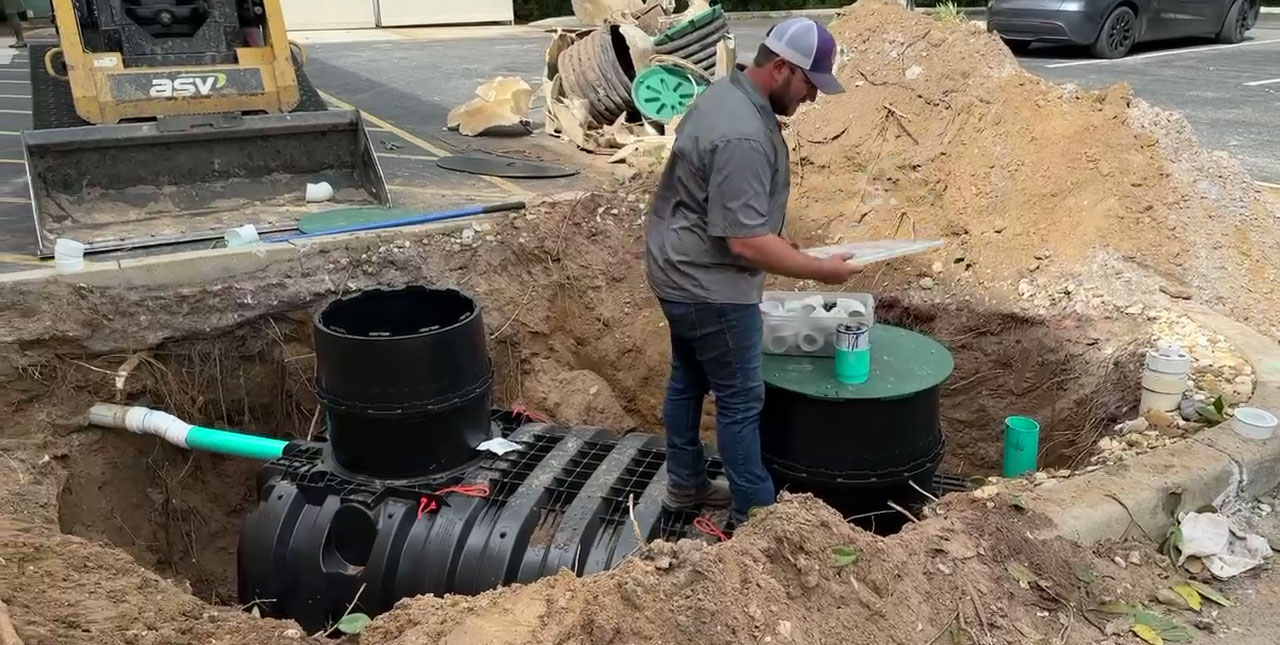Regarding septic tanks in Florida, homeowners often choose between buying a concrete or a plastic poly tank, the two most commonly used materials. Each option has its pros and cons, making it crucial to make an informed decision. In this article, we’ll delve into the key factors to consider, including price, durability, ease of installation, maintenance, and potential concerns, to help you choose the most suitable material for your septic tank needs.
Price of Materials
Concrete Septic Tank Cost: Concrete tanks are generally more expensive than their poly counterparts. The raw materials, heavy equipment, and labor involved in constructing a concrete tank can drive up the initial cost.
Poly Septic Tank Prices: Poly tanks, made from high-density polyethylene (HDPE), are typically more budget-friendly due to the lower cost of materials and simpler manufacturing process. The affordability of poly tanks can be a significant attraction for homeowners looking to save on their initial investment.
Durability
Concrete Septic Tanks: Known for their durability, concrete septic tanks can last for decades when properly maintained. They can withstand the test of time and are less susceptible to damage from external forces or shifting soil. However, they may be susceptible to corrosion in acidic soil conditions.
Poly Septic Tanks: Plastic tanks are resistant to corrosion and rust, offering a longer lifespan in diverse soil types. Plastic can be durable and will last many years.
Ease of Installation
Concrete Septic Tanks: Concrete tanks are heavy and require specialized equipment for installation, which can increase installation costs.
Poly Septic Tanks: HDPE tanks are lightweight and more straightforward to install, potentially reducing installation expenses.
Septic Tank Maintenance
Concrete Septic Tanks: Concrete requires regular inspection and maintenance to prevent corrosion and ensure longevity. Concrete tank lids and access points should be checked for secure seals, preventing groundwater contamination. Concrete tanks should be pumped every 3-5 years alongside a professional assessment to ensure early detection of issues, preventing costly repairs or system failures.
Poly Septic Tanks: These tend to be lower maintenance, as poly tanks do not corrode or rust, but inspections are still recommended. While poly tanks are resistant to corrosion, they are lightweight and can float during high groundwater conditions if improperly installed. This disruption is a much more significant concern in areas of Florida with high tables like the North-central region. Like concrete, poly tanks should be pumped every 3-5 years to maintain good septic tank health.
How to Choose the Right Material
Selecting the best material for your Florida septic tank depends on your specific needs and budget. Consider your soil type, budget, and long-term maintenance capabilities when making this critical decision. Consulting with a professional septic service provider, like ACE Septic & Waste, can help you make an informed decision.








